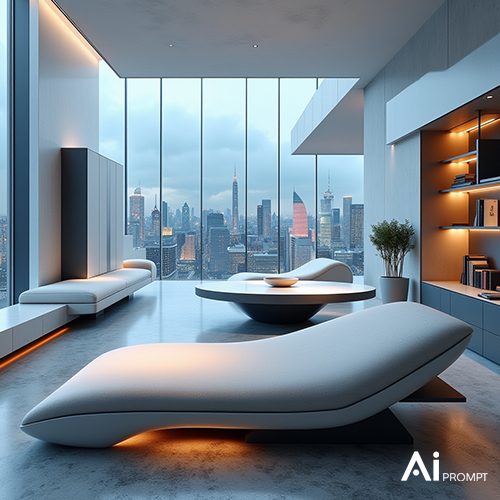Adaptive smart furniture is transforming how we experience our homes, merging functionality with innovation. This article delves into the evolution, technology, and incredible benefits of these intelligent furnishings that dynamically adapt to user needs, enhancing both comfort and efficiency in modern living.
The Evolution of Furniture Design
The evolution of furniture design has traversed a fascinating journey from handcrafted pieces steeped in tradition to the innovative realm of adaptive smart furniture. Historically, furniture was a reflection of craftsmanship focused on aesthetics and utility. As consumer lifestyles changed, there emerged a need for flexibility and personalization, fueled by technological advancements.
In the early days, the primary consideration in furniture design was its practical use combined with visual appeal. Over time, however, designers began to recognize the importance of user-centered design principles. The shift from static, form-driven creations to dynamic, adaptable structures marked a significant turning point. This transformation was not merely aesthetic but also functional, paving the way for the integration of smart features and adaptability.
Driven by modern consumer needs for multifunctionality and space optimization, furniture began to evolve into responsive, intelligent systems. Early adaptations focused on modular designs and convertible pieces, but today’s smart furniture incorporates advanced technologies that enhance usability and comfort. The integration of sensors and automation signifies a departure from mere utility, emphasizing a holistic approach where the user experience is paramount.
As we embrace a more interconnected lifestyle, furniture must reflect these advances, leading to the emergence of adaptive designs that respond to various user needs. The trajectory of furniture design reveals a profound shift, where adaptability and technology work in tandem to enhance not just the aesthetics of living spaces, but their inherent functionality as well.
Integrating Technology into Furniture
The integration of technology into furniture has transformed living spaces into intelligent ecosystems. Innovations like IoT, sensors, and automation enable features such as self-adjusting heights and built-in charging capabilities. For instance, desks that modify their elevation as users transition from sitting to standing enhance ergonomics, while environmental monitors regulate air quality and lighting, reducing clutter and promoting efficiency. Embracing these technologies enriches user experience and comfort, responding to diverse lifestyles and enhancing overall functionality.
The Future of Living with Smart Furniture
The future of living with smart furniture promises an era of unparalleled personalization and sustainability. With AI-driven design, furniture will adapt in real-time to individual preferences and lifestyles, maximizing comfort and efficiency. This evolution will encourage eco-conscious choices, utilizing materials that promote longevity and recyclability, thereby significantly reducing waste.
As our homes transform into intelligent ecosystems, adaptive furniture will learn from our routines, optimizing space utilization and enhancing well-being. Future trends suggest a seamless integration of smart features, allowing for customizable layouts that respond to our needs. This shift will redefine how we interact with our surroundings, making home environments truly reflective of our identities.
In commercial spaces, adaptive smart furniture could foster collaborative ecosystems, easily reconfigured for various functions. The next decades will see intelligent solutions that not only elevate living standards but also foster communal harmony, emphasizing flexibility and resilience within our built environments.
Adaptive smart furniture epitomizes the future of home design by providing tailored solutions through innovative technology. As these pieces gain popularity, they will redefine comfort and utility in our living spaces, ultimately enhancing our day-to-day experiences. Embracing this trend means being part of a more efficient and connected home environment.
This concept were created by aiprompt.media _ Reza Ferdowsian.

